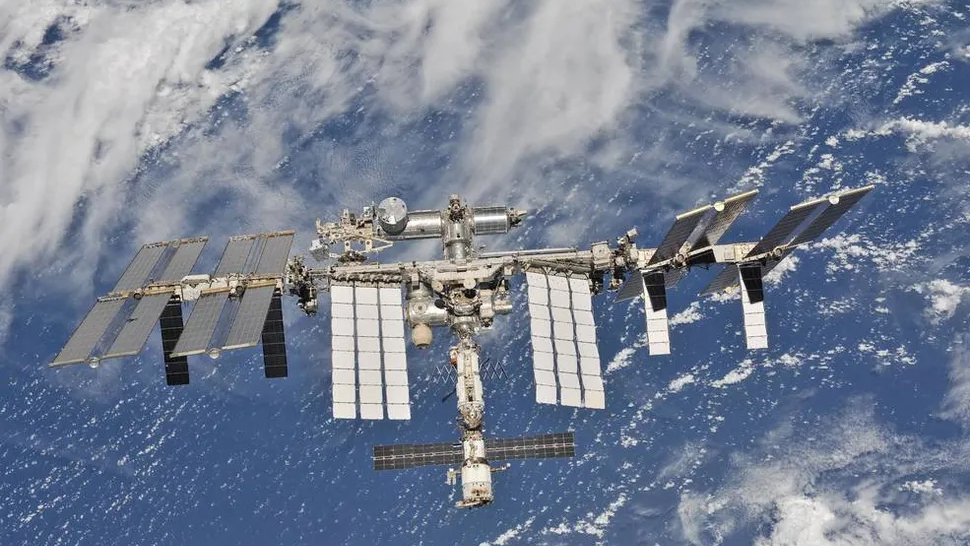NASA wants more 'space tug' ideas to deorbit the International Space Station in a fiery finale
A spaceship will safely bring down the U.S. segment of the ISS after the program concludes in 2030.

NASA is asking U.S. industry for proposals to create a "space tug" for removing the International Space Station from orbit in the early 2030s.
The agency plans to use a U.S. Deorbit Vehicle (USDV) to safely steer the International Space Station (ISS) into Earth's atmosphere. (White House officials previously called this vehicle a "space tug.") If all goes according to NASA's plan, after the ISS program concludes, flights and commercial research will proceed on industry-led space stations, which are now in their early stages of development.
USDV proposals are due on Nov. 17, and more details about the requirements are available on this U.S. government website. NASA is allowing vendors to suggest much of the design of the vehicle as well as the best payment type: firm fixed price, or cost plus incentive fee for each of the initial phases (design, development, test and evaluation) to be followed by firm fixed price.
Related: NASA wants new 'deorbit tug' to bring space station down in 2030
"At the conclusion of the International Space Station program, the station will be deorbited in a controlled manner to avoid populated areas," NASA officials wrote in a blog post Sept. 20 announcing the request for proposals. A Russian Progress cargo vehicle, which is usually used to boost the ISS' orbit periodically, they added, would not be sufficient for the job. As such, "a new spacecraft solution would provide more robust capabilities for responsible deorbit."
NASA emphasized that the USDV would be responsible for deorbiting the U.S. segment, but did not provide details on how the other main international partners would remove their sections from orbit. "Partner contributions (are) based on mass percent ownership by agency," NASA officials said, framing the ISS deorbit as "a shared responsibility" among the partnership.
The USDV, they added, "will be a new spacecraft design or modification to an existing spacecraft that must function on its first flight, and have sufficient redundancy and anomaly recovery capability to continue the critical deorbit burn. As with any development effort of this size, the USDV will take years to develop, test and certify."
Breaking space news, the latest updates on rocket launches, skywatching events and more!
The other main partners on the ISS (listed in order of size of contribution, starting with the largest) include the Russian federal space agency Roscosmos, the European Space Agency, the Japan Aerospace Exploration Agency and the Canadian Space Agency (CSA). With the exception of the CSA, these partners all have at least one module on station. The CSA has robotics, namely Canadarm2, the Dextre handyman robot and supporting infrastructure.
With the exception of Roscosmos, the other partners have agreed to remain on station with NASA until 2030. Russia will withdraw no earlier than 2028 to pursue its own space exploration plans. Space partnerships with Russia were mostly severed after its internationally condemned invasion of Ukraine in February 2022, which is ongoing. But ISS relations remain normal in the meantime, NASA has emphasized.
Join our Space Forums to keep talking space on the latest missions, night sky and more! And if you have a news tip, correction or comment, let us know at: community@space.com.

Elizabeth Howell (she/her), Ph.D., was a staff writer in the spaceflight channel between 2022 and 2024 specializing in Canadian space news. She was contributing writer for Space.com for 10 years from 2012 to 2024. Elizabeth's reporting includes multiple exclusives with the White House, leading world coverage about a lost-and-found space tomato on the International Space Station, witnessing five human spaceflight launches on two continents, flying parabolic, working inside a spacesuit, and participating in a simulated Mars mission. Her latest book, "Why Am I Taller?" (ECW Press, 2022) is co-written with astronaut Dave Williams.
